Star Trek: The Art of Glenn Hetrick’s Alchemy Studios, the new 192-page reference book detailing much of the creative make-up design and application for Star Trek: Discovery from Joe Nazarro and Titan Books, is appropriately titled.
When first diving into the publication’s detailed prose and artistry, you might think the focus would invariably land on just Glenn Hetrick himself as the pages churn through the creation of everything from the Discovery-era Klingons and Saru to the debut of the fifth-season Breen.
And why not? Hetrick is a visible force in the industry, with a massive reputation for his many career accomplishments, including his presence on the gone-too-soon creature design reality show, Face-Off, with his tattoos, hair and style always matching the work he was putting on screen.
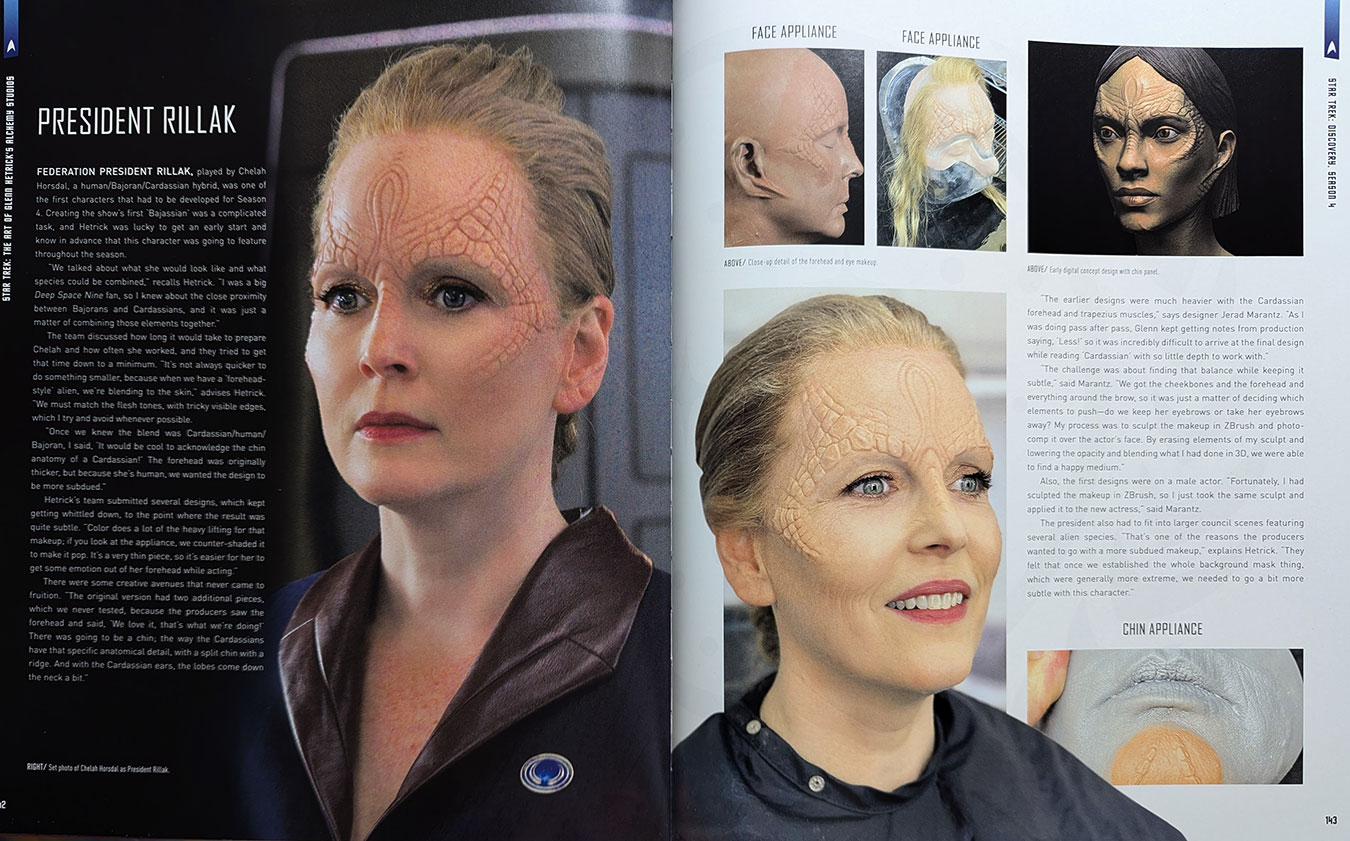
But the truth about Hetrick, if you’ve ever heard him interviewed — or if you pick up this excellent book and actually read it (instead of just getting lost in the thousands of riveting photos) — is that he is a scholar in the world of make-up design and application. At every phase in the process. And you learn about each of those phases in this publication as Hetrick, and seemingly scores of names, are referenced throughout each chapter of this book discussing designing, sculpting, molding, casting, fabrication, printing, painting, applying, touching up, etc., ad infinitum.
Brilliantly and simply broken into five main sections detailing each of Discovery’s five seasons, the book is easy to go through from that aspect, but offers amazing detail on each page, whether diving deep into the Hetrick’s vision for how his version of the Andorians came to be (originally he toyed with covering their eyes, so they were actually blind) or skimming quickly over a character like Facian from the episode “…But to Connect,” with a cool otherworldly insect-like design. There is just so much here.
Of course, a book about the make-up design of Star Trek: Discovery can’t escape the never-ending discussion, from every angle, of the Discovery-era Klingons and all the strong opinions that come with it. If you are looking for this book to address the reception of the Klingons back in the early seasons of the show, you will be disappointed. It doesn’t really do that.
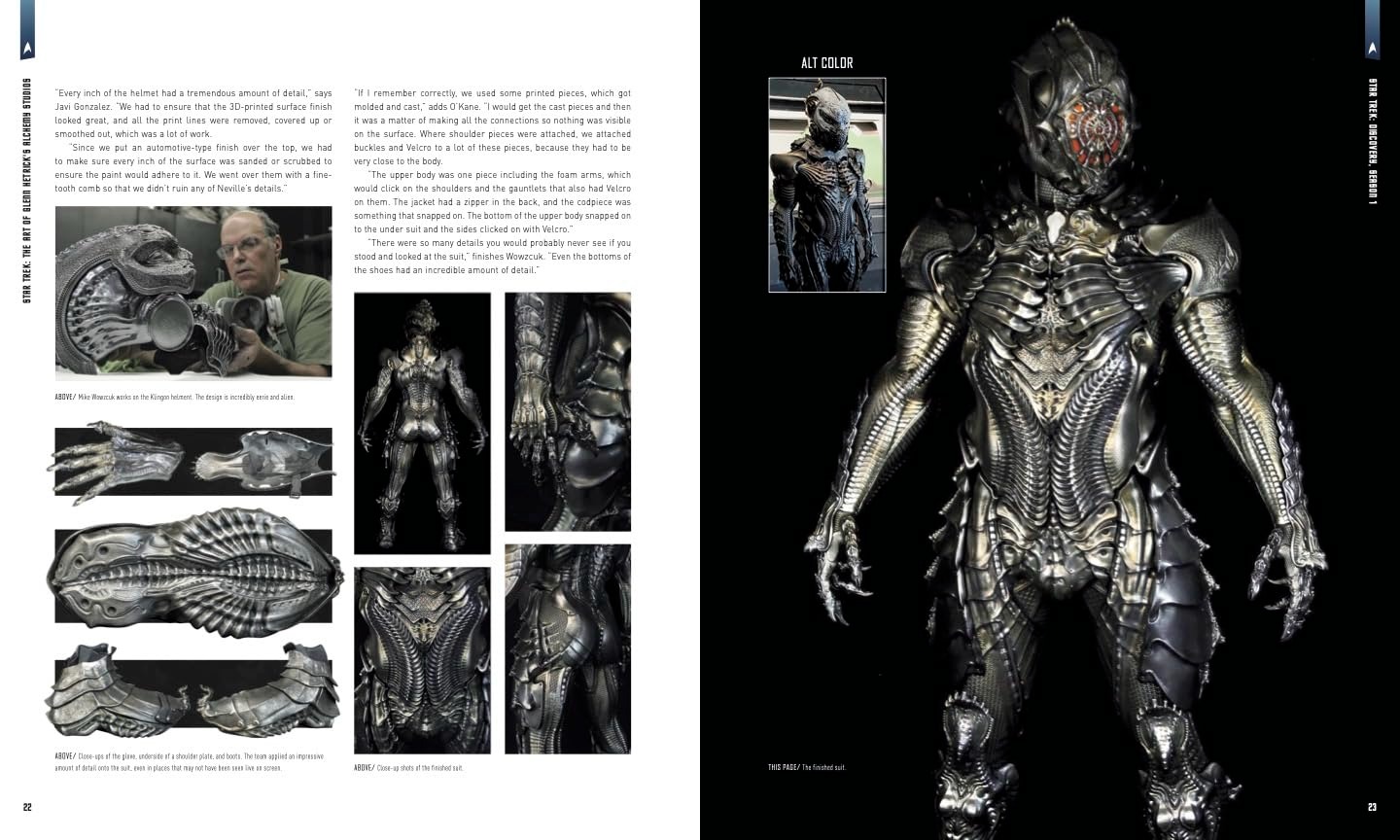
However, it does detail in full Alchemy’s design process for the Klingons. From a fantastic two-page spread on the Klingon Cultural Axioms created by Hetrick himself that set the stage for the design impetus behind each Klingon house, to a brilliant photo spread on the creation of the intricate Torchbearer costume, there is a lot here on the Klingons. (They’re bald! They have hair! That one looks like Glenn Hetrick!)
In regard to the Torchbearer costume from the Discovery pilot, many of the details here have been told before in behind-the-scenes vignettes and on stage at conventions, but the information compiled here is accompanied for the first time by a myriad of intricate photos that allow you to really understand how the suit was actually constructed and fitted for the stunt performer. It’s a great piece — and the Torchbearer design and production remains a standout for Alchemy even after all these years.
Another interesting section in the book is a four-page spread on the addition of the Orions to Discovery in Season 3. The short prose addresses the reasons that Hetrick and his artists went with a full silicon make-up for the Orions, instead of just painting the actors green (since they basically share the same features as humans).
“If you’re shooting in HD, you can’t get away with paint anymore,” Hetrick is quoted saying. “It just looks like what it is — and even worse in HD. To achieve the hyper-realism demanded of us nowadays, we needed to go full silicon…”
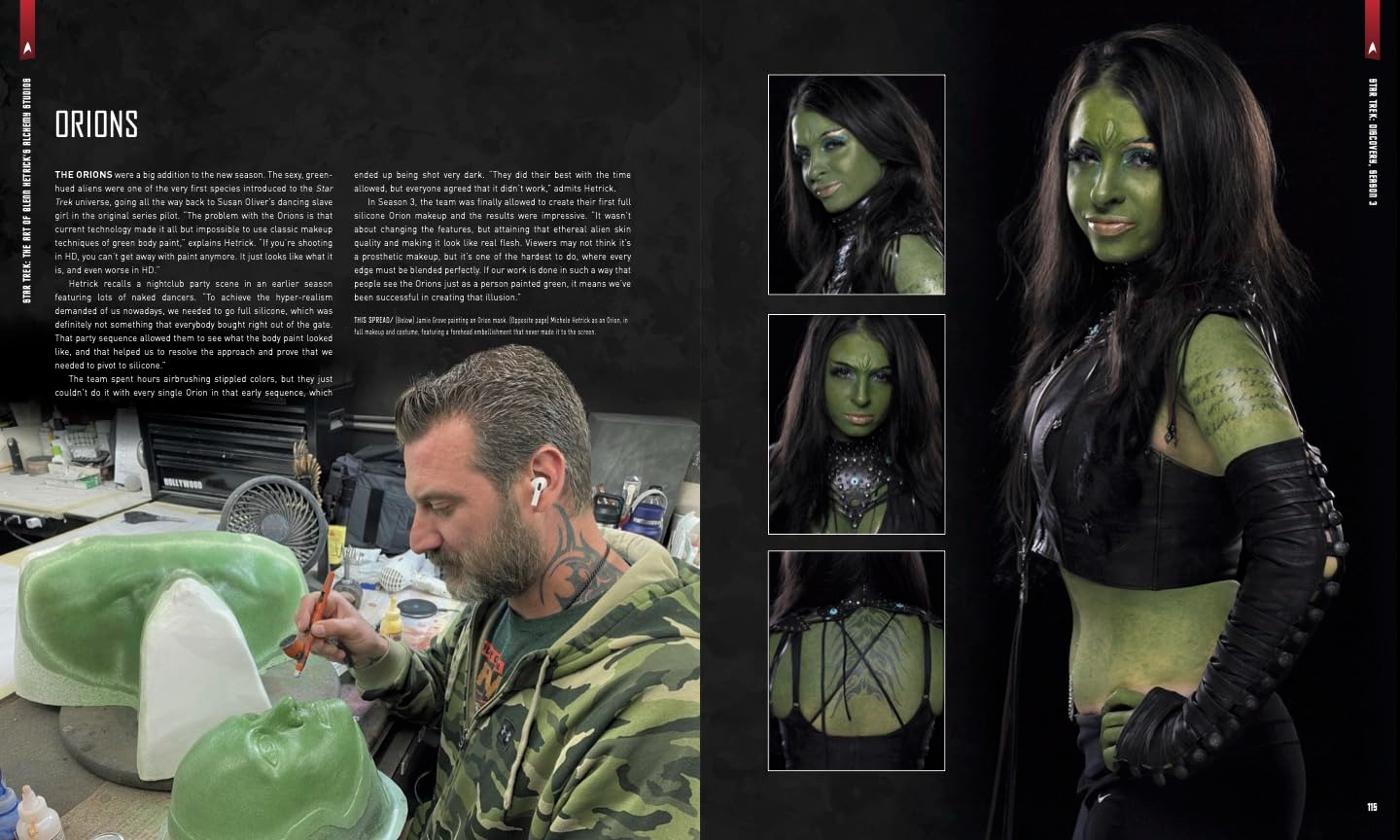
Although the Orion photospread in this section certainly highlights the eye-popping green and clean edges for all the actors portraying one of Star Trek’s most venerable aliens, it is sometimes hard to get past the idea of a human face being applied with basically an extra layer of “human face” silicone on top of it. Something about it felt off, which seemed to be corrected when the Orions were revisited in Strange New Worlds’ “Those Old Scientists.”
In another oddity in the book, the section on Callum Keith Rennie’s incredible Captain Rayner character — based on the deep-cut Deep Space Nine one-off alien race the Kelleruns — gives us cool background on Hetrick originally basing his ear design on the Srivani, a one-off race featured in Voyager’s “Scientific Method.”
(The problem? There is no reference to the Kellerun in the book, and the final design is credited as Srivani, which is clearly where it started, based on Hetrick’s design process, but not where it ended.)
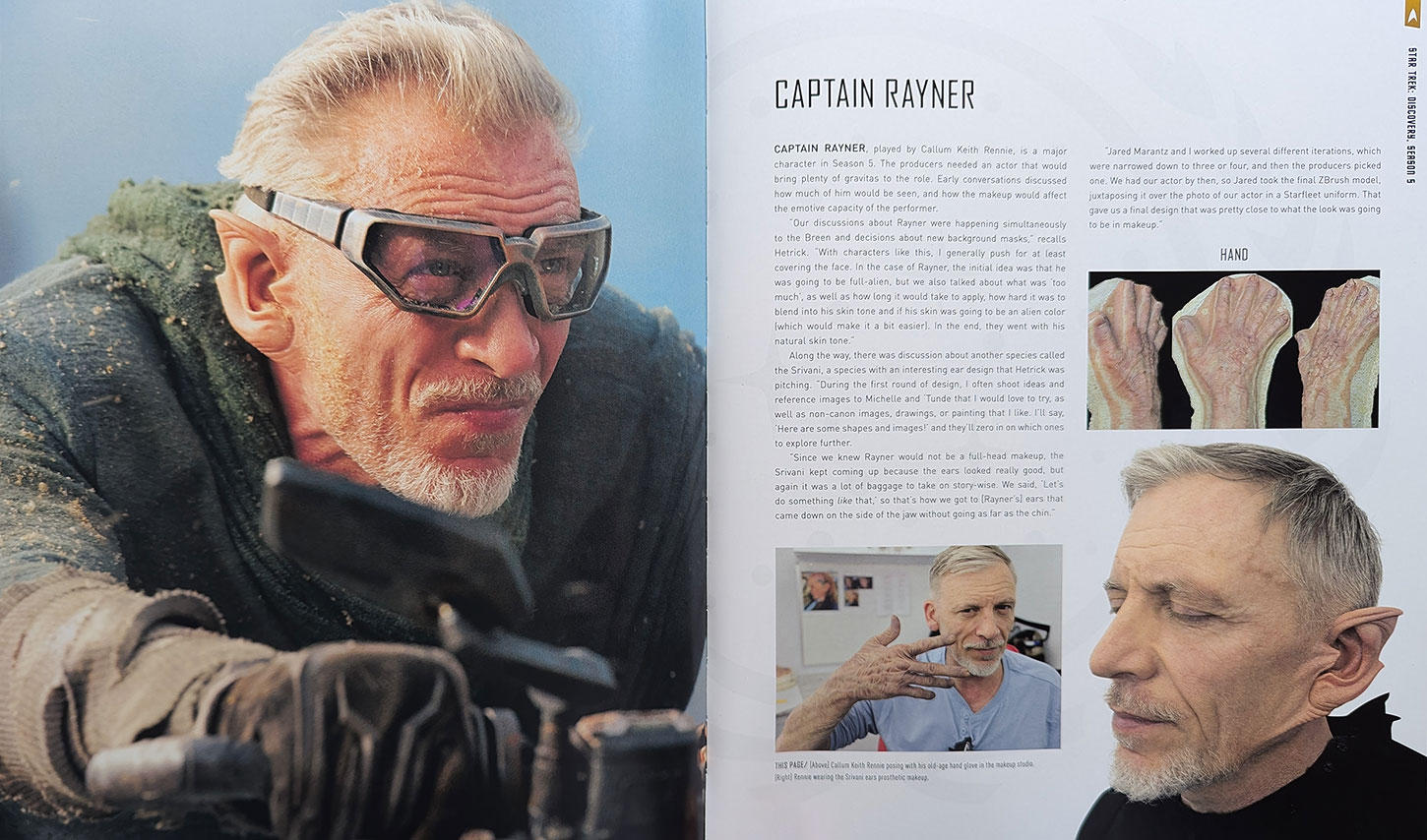
Perhaps the biggest creative surprise from Alchemy in their five seasons of Discovery was the reveal that this famous “physical make-up and creature effects” studio was responsible for producing the 100 percent digital creature design, Species 10-C. This process, which originated from the mind of Hetrick, is analyzed in a comprehensive breakdown across 14 pages, the largest section of the book. (In contrast, the rest of Season 4 is covered in just 16 pages.)
In breaking down his process for working with a myriad of designers to visualize Species 10-C (or the “Gas Giants,” as they are referred to here), Hetrick perfectly sums up the impressive way his expertise and craft go so far beyond just sculpting and painting:
This is a skill that young people need to understand. When I’m doing signings at conventions, I get asked what skills they need to be working on. They know they need to sculpt and paint, and a fundamental understanding of this type of art is to be able to do effects.
Too many people jump into blood and guts and zombies, and covering things with gore, and everybody gets the same lesson about learning anatomy, but nobody tells you that you have to work on your speaking skills as well – not just group discussion as a team leader in the studio or trailer, but also your ability to interface with other intelligent people that are working on your level, where you’re talking about scripts and stories and narratives and emotions.
You have to be able to actively listen to what people have to say, so you can interpret their comments and come back with something else.
Perfectly said.
In the end, Alchemy Studio is about big swings and professional production. And that might not have been something you would have known before you picked up this reference book, but it surely will be a takeaway once you go through its detailed presentation.
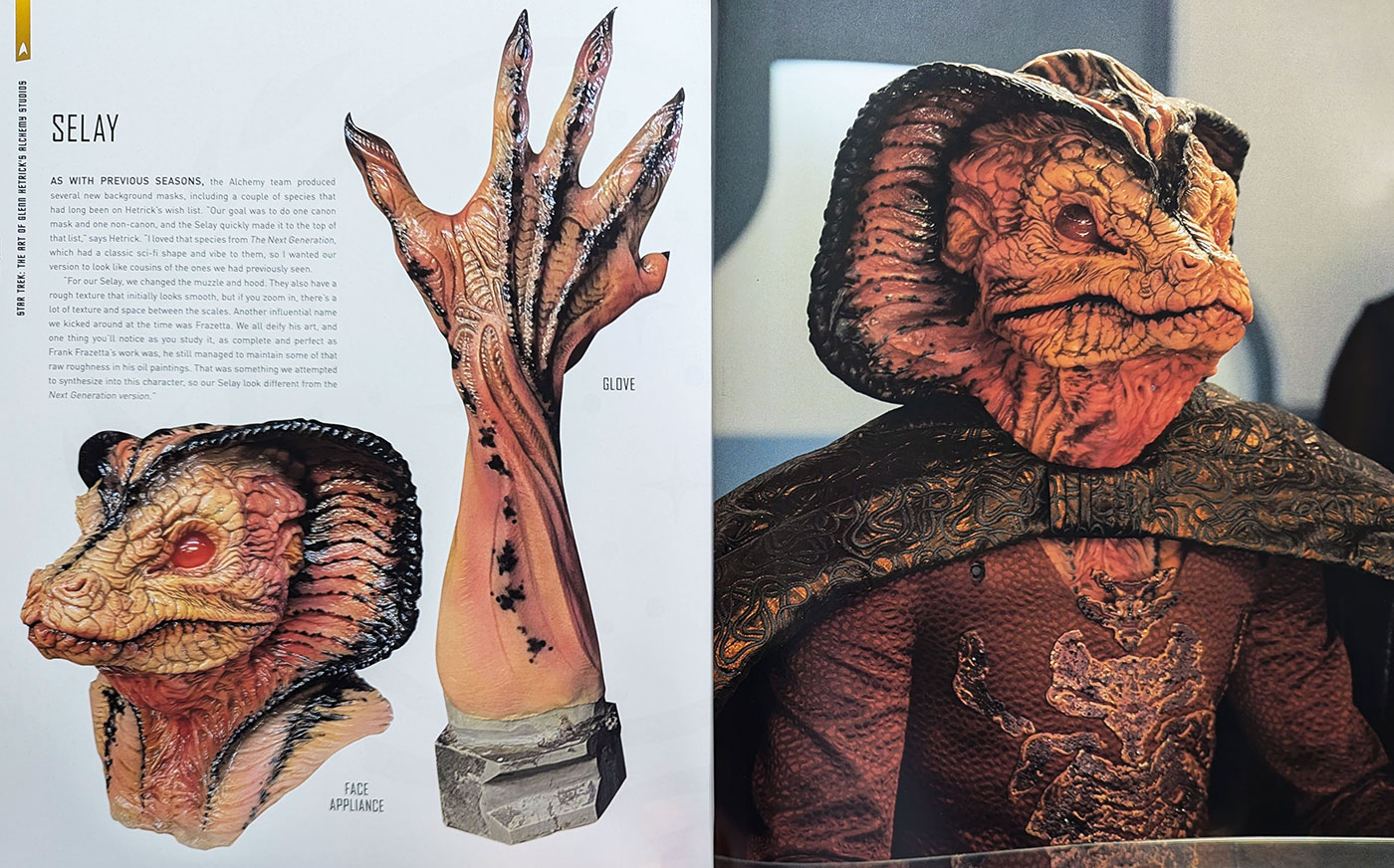
It’s a historical framing of Alchemy Studios’ intense, detailed work on Star Trek: Discovery, while also serving as a testament to the leadership of Alchemy’s visionary mastermind, Glenn Hetrick. The man is obviously an artistic genius, but in so many ways is unexpectedly so much more than that in the way he manages his studio and his group of artists at every stage of production.
The work speaks for itself and has cemented his contributions to the Star Trek universe, which are now immortalized for all-time here and on the screen in Discovery.
![]()
Star Trek: The Art of Glenn Hetrick’s Alchemy Studios is in stores now.
Jim Moorhouse is the creator of TrekRanks.com and the TrekRanks Podcast. He can be found living and breathing Trek every day on Twitter at @EnterpriseNXtra.
